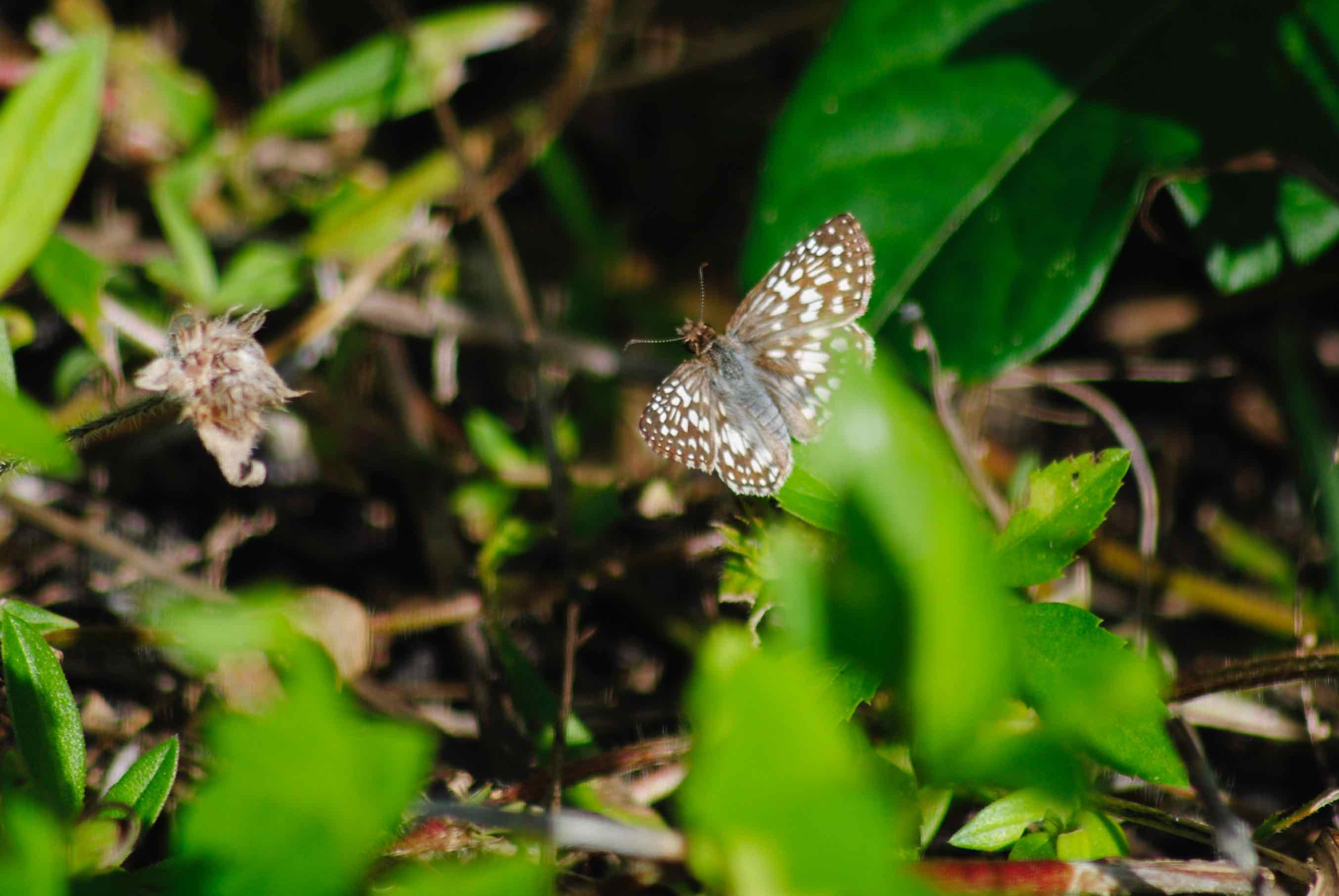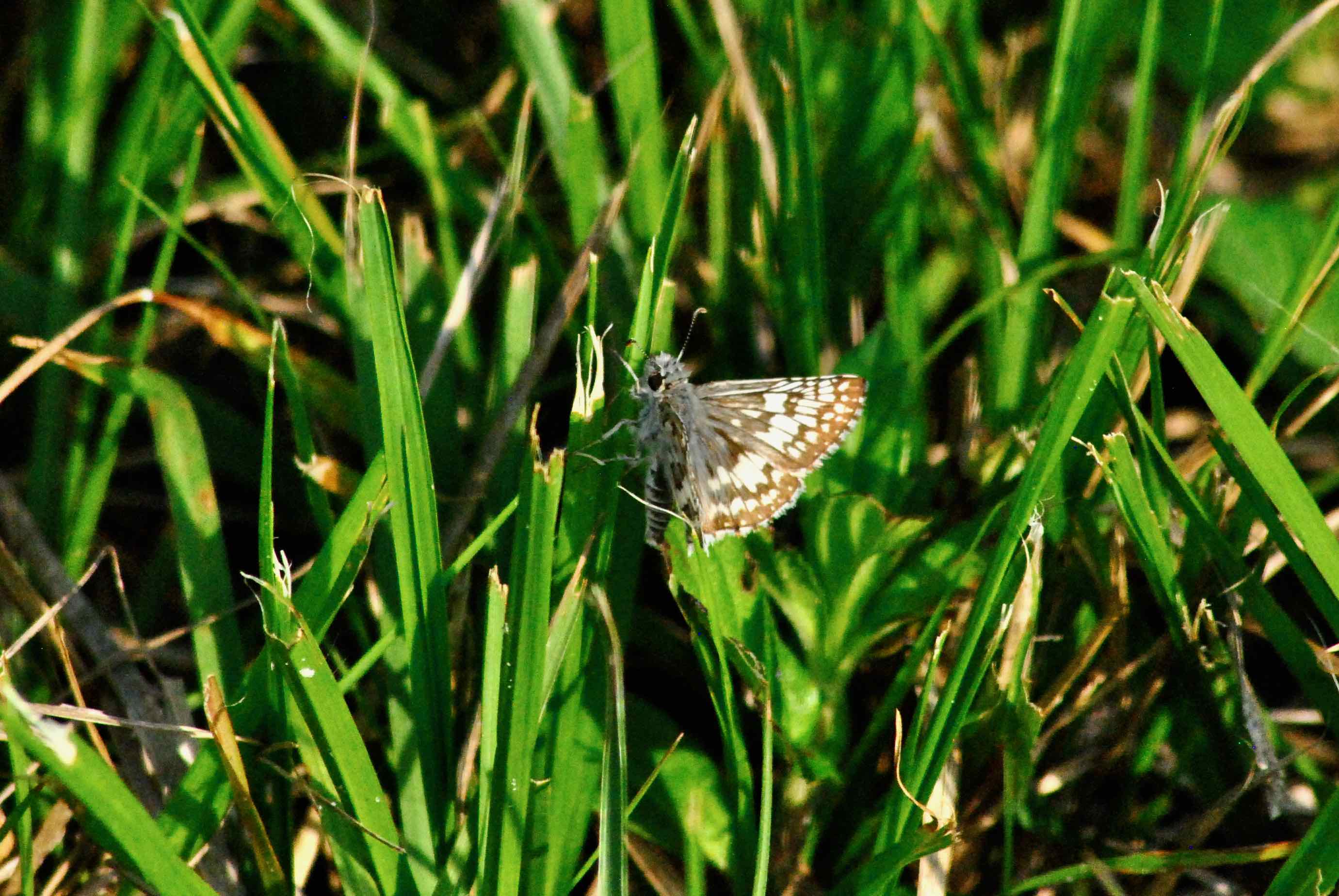
Tripical checkered skipper butterfly, photographed at Loxahatchee National Wildlife Refuge, Boynton Beach, Palm Beach County, in January 2015.
Generally speaking, skippers don't have the most elaborate color patterns on their wings, and from what we've seen, they mostly perch with their wings folded up. The tropical checkered skipper, Pyrgus oileus, is an exception on both counts.
It is, however, like other skippers in two respects — its small size and fast, darting style of flight. The wingspan of the tropical checkered-skipper tops out at about an inch and a half.
It's an abundant butterfly, and Florida is the northern tip of its natural range. It's found throughout the Peninsula, as far south as the Florida Keys. It's also found in South Texas, Mexico, the Caribbean, Central America and South America to Argentina. It will stray farther north, having been spotted in North Carolina and Missouri on rare occasions. It prefers open, sunny habitats, including roadsides, fields, fallow agricultural lands and pastures.
Adults nectar on wire weed and members of Asteraceae, the sunflower family, like Spanish needles. It favors members of Malvaceae as host plants, including mallows (hibiscus) and sidas (wire weeds).
Tropical checkered skippers are "in flight" year round in South Florida, producing as many as five generations within a year, but limited to spring and summer farther north, where they produce fewer generations.
Tropical checkered skippers are basically brown with numerous white spots throughout their wings. Males also have blue-gray hairs along the length of their bodies and on the base of their wings. Females tend to be darker, with fewer white spots and less hair.
Males spend their time either perched or patrolling, on the look out for receptive females. Fertilized females will lay a single light green egg on the upper side of a host plant.
Mature larvae, or caterpillars, have a green body with darker green lateral lines running the length of the body; the head is black. They spend their time in sheltered web eating the leaves of the host. As with butterflies generally, tropical checkered skipper caterpillars will go through four instars, or development stages before becoming pupae.
Tropical checkered-skippers are somewhat similar in appearance to white checkered-skippers, Pyrgus albescens, and common checkered-skippers, P. communis.
They are members of Hesperidae, the formal name for the skipper family, and Pyrginae, the subfamily of skippers who perch with their wings spread open, or flat, like most butterflies.



